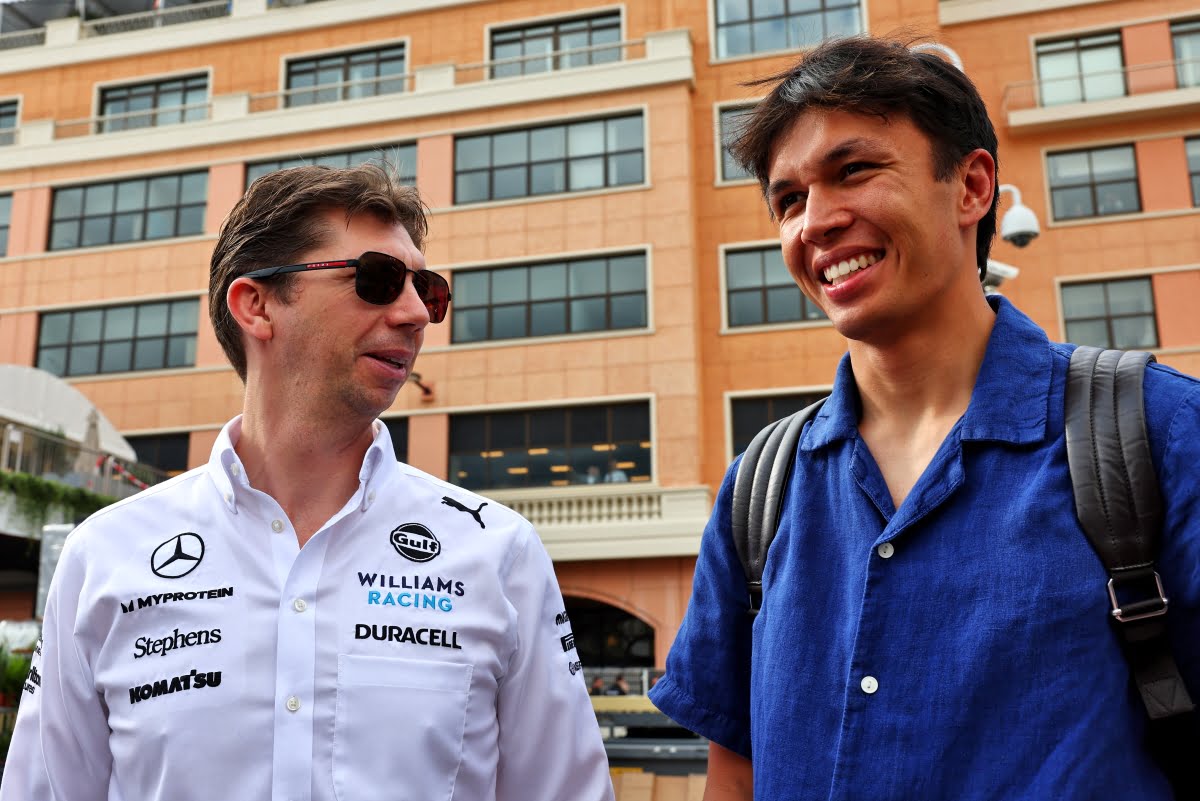Lex Albon has been transparent about the reasons he will remain a Williams driver for the foreseeable future. He cites the strong mix of a Mercedes engine that performs well and the brand’s legacy of innovation. Albon is counting on Mercedes to uphold their reputation as a company that leads through change, particularly in light of the impending 2026 engine rules. He emphasizes that Mercedes usually adapts to major regulatory changes faster than competitors.

The general consensus among drivers on the grid is that Mercedes will be able to handle the impending changes to engine regulations with ease. With the entry of new rivals like Audi, there are a lot of expectations regarding differences in engine performance between different manufacturers. However, the German team is well-positioned for any upcoming challenges because to its solid foundations, which are reinforced by plentiful resources and seasoned professionals.
In an interview with Total Motorsport, Alex Albon went into further detail on why he is confident due to Mercedes’ track record:
“I believe Mercedes has consistently shown itself to be one step ahead of its competitors when it comes to these regulatory adjustments. Not that I don’t believe other teams will perform admirably.
Albon went on to elaborate on his confidence in Mercedes:
“But it’s a safe gamble, in my opinion. I’m sure the other midfield clubs that are adding a new power unit will invest a significant sum of money to get off to a quick start.
Williams has had difficulties that highlight the significance of a strong engine alliance for a team that is so dependent on the performance of its supplier. The effectiveness of these partnerships is crucial to the midfield F1 squad. Supported by Mercedes, Albon’s decision to stick with Williams is a calculated action from a driver who understands the subtleties that determine his team’s performance.

With the sport about to undergo yet another important evolution in 2026, engines will receive equal attention to aerodynamics. Toto Wolff and his team see not only a challenge but also a huge opportunity to return to the head of the grid.
Future Technical Changes in Formula One in 2026The sport gets ready for significant regulatory changes by 2026 in 2026. All of these upcoming modifications, which include a complete redesign of the chassis and upgraded power units, are having an impact on personnel decisions and team plans.
The 2026 season will see the introduction of drastically altered vehicles with engines and chassis that are more closely aligned with modern road car technologies. This change is a component of Formula 1’s larger plan to draw in more automakers by incorporating commercial vehicle-relevant technologies. With the former taking over the Sauber team and the latter returning to the sport in collaboration with Red Bull, Audi and Ford have already responded.
The most important technical modification is the elimination of the MGU-H, the part that converts waste heat into electrical energy. Its decreasing importance to road car technology is the driving force for this decision. To further advance Formula 1’s objective of becoming carbon-neutral by 2030, the new regulations will also see the introduction of 100% sustainable fuels and modifications to maintain a 50/50 balance between fuel-derived and electric power.
It’s interesting to note that the Drag Reduction System, which lessens an automobile’s aerodynamic drag and aids in passing, is also being examined. A manual overdrive mechanism that enables drivers to increase speed when overtaking could be one of the potential alterations, alluding to worries that the new aero regulations will limit these opportunities.
Significant chassis modifications will also result in automobiles having lower wheelbases and smaller widths, as well as weight reductions of up to 50 kg.
The Formula 1 scene is expected to undergo a significant transformation as teams and drivers adjust to these changes.